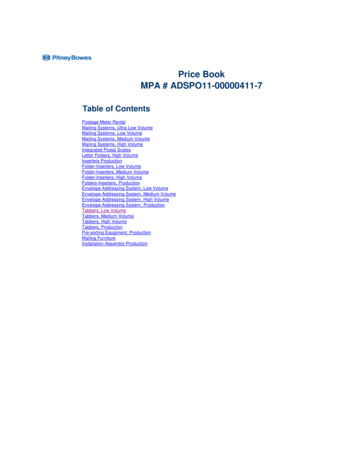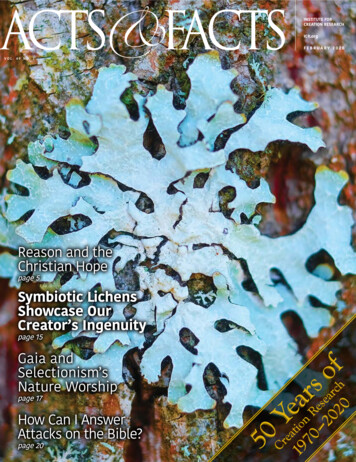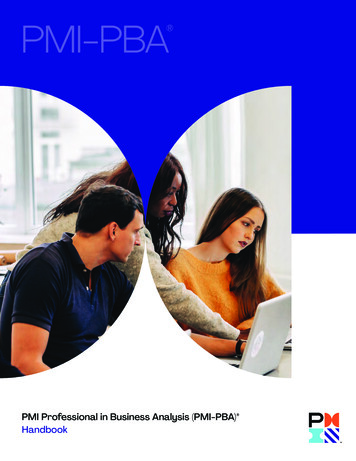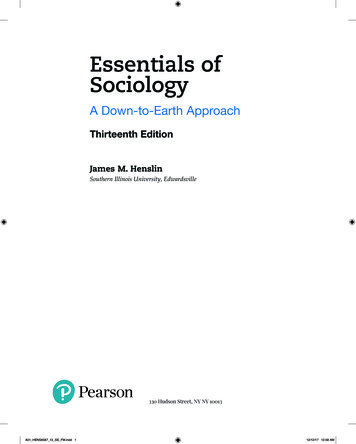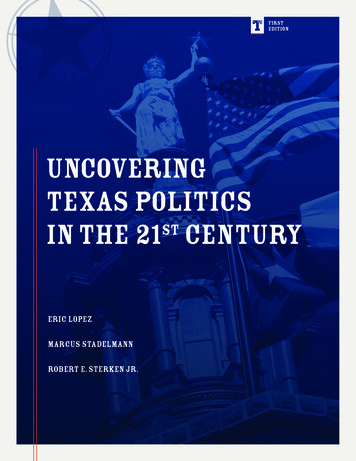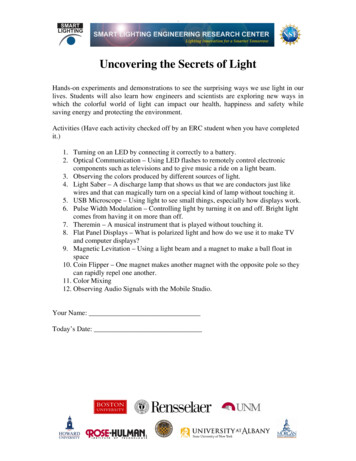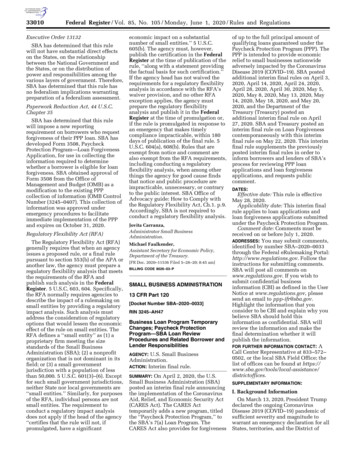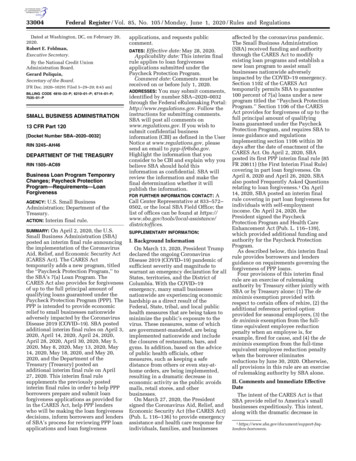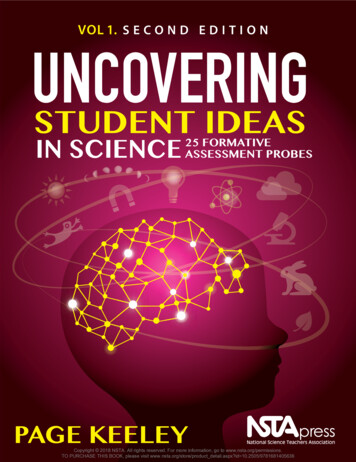
Transcription
VOL 1. S E C O N D E D I T I O NUNCOVERINGSTUDENT IDEASIN SCIENCE25 FORMATIVEASSESSMENT PROBESPAGE KEELEYCopyright 2018 NSTA. All rights reserved. For more information, go to www.nsta.org/permissions.TO PURCHASE THIS BOOK, please visit www.nsta.org/store/product detail.aspx?id 10.2505/9781681405636
Copyright 2018 NSTA. All rights reserved. For more information, go to www.nsta.org/permissions.TO PURCHASE THIS BOOK, please visit www.nsta.org/store/product detail.aspx?id 10.2505/9781681405636
Copyright 2018 NSTA. All rights reserved. For more information, go to www.nsta.org/permissions.TO PURCHASE THIS BOOK, please visit www.nsta.org/store/product detail.aspx?id 10.2505/9781681405636
By Page KeeleyArlington, VirginiaCopyright 2018 NSTA. All rights reserved. For more information, go to www.nsta.org/permissions.TO PURCHASE THIS BOOK, please visit www.nsta.org/store/product detail.aspx?id 10.2505/9781681405636
Claire Reinburg, DirectorRachel Ledbetter, Managing EditorDeborah Siegel, Associate EditorAndrea Silen, Associate EditorDonna Yudkin, Book Acquisitions ManagerArt and DesignWill Thomas Jr., DirectorCover, Interior Design, and Illustrationsby Linda OlliverPrinting and ProductionCatherine Lorrain, DirectorNational Science Teachers AssociationDavid L. Evans, Executive Director1840 Wilson Blvd., Arlington, VA 22201www.nsta.org/storeFor customer service inquiries, please call 800-277-5300.Copyright 2018 by the National Science Teachers Association.All rights reserved. Printed in the United States of America.21 20 19 18 4 3 2 1NSTA is committed to publishing material that promotes the best in inquiry-based science education. However, conditions of actual use may vary, and the safety procedures and practices described in this book are intended to serve onlyas a guide. Additional precautionary measures may be required. NSTA and the authors do not warrant or representthat the procedures and practices in this book meet any safety code or standard of federal, state, or local regulations.NSTA and the authors disclaim any liability for personal injury or damage to property arising out of or relating tothe use of this book, including any of the recommendations, instructions, or materials contained therein.PermissionsBook purchasers may photocopy, print, or e-mail up to five copies of an NSTA book chapter for personaluse only; this does not include display or promotional use. Elementary, middle, and high school teachersmay reproduce forms, sample documents, and single NSTA book chapters needed for classroom ornoncommercial, professional-development use only. E-book buyers may download files to multiple personaldevices but are prohibited from posting the files to third-party servers or websites, or from passing files tonon-buyers. For additional permission to photocopy or use material electronically from this NSTA Pressbook, please contact the Copyright Clearance Center (CCC) (www.copyright.com; 978-750-8400). Please accesswww.nsta.org/permissions for further information about NSTA’s rights and permissions policies.Cataloging-in-Publication Data for this book and the e-book are available from the Library of Congress.ISBN: 978-1-68140-563-6e-ISBN: 978-1-68140-564-3Copyright 2018 NSTA. All rights reserved. For more information, go to www.nsta.org/permissions.TO PURCHASE THIS BOOK, please visit www.nsta.org/store/product detail.aspx?id 10.2505/9781681405636
ContentsPreface . viiAcknowledgments . . xiiiAbout the Author . xvIntroduction . 1Section 1. Physical Science ProbesConcept Matrix .161Can It Reflect Light? .172Apple in the Dark .253Birthday Candles .314Making Sound . .375Ice Cubes in a Bag . .456Lemonade .537Cookie Crumbles .618Seedlings in a Jar .679Is It Melting? .7310Is It Matter? .7911Is It Made of Molecules? .8712The Rusty Nails .9313Talking About Gravity . .9914The Mitten Problem .10715Objects and Temperature . 115Copyright 2018 NSTA. All rights reserved. For more information, go to www.nsta.org/permissions.TO PURCHASE THIS BOOK, please visit www.nsta.org/store/product detail.aspx?id 10.2505/9781681405636
Section 2. Life, Earth, and Space Science ProbesConcept Matrix .12416Is It an Animal? .12517Is It Living? .13318Is It Made of Cells? . .14319Human Body Basics . . 15120Functions of Living Things . 15721Wet Jeans . 16522Beach Sand .17323Mountain Age . . 18124Gazing at the Moon .18925Going Through a Phase .197Index . 205Copyright 2018 NSTA. All rights reserved. For more information, go to www.nsta.org/permissions.TO PURCHASE THIS BOOK, please visit www.nsta.org/store/product detail.aspx?id 10.2505/9781681405636
PrefaceUncovering Student Ideas in Science, Volume 1,Second Edition: 25 Formative Assessment Probesupdates the 2005 version by including a Spanishlanguage version for each student probe page,adding current research summaries, linkingto related ideas in A Framework for K–12 Science Education (the Framework; NRC 2012)and the Next Generation Science Standards(NGSS; NGSS Lead States 2013), adding newinstructional suggestions and National ScienceTeachers Association (NSTA) resources, andmaking minor changes to the text in a fewof the probes.Similar to the other books in the Uncovering Student Ideas in Science series, this bookprovides a collection of unique questions,called formative assessment probes, purposefully designed to reveal preconceptions students bring to their learning and to identifymis u nderstandings students develop duringinstruction that may go unnoticed by theteacher. Each probe is carefully researchedto develop distracters that mirror commonlyheld ideas students have about concepts orphenomena. Although a suggested grade levelis provided, the probes are not grade-specific.They are designed to be used across multiplegrade spans as well as with adults for professional learning or preservice education; especiallysince alternative ideas that go unchallengedwill often follow students from one grade tothe next, right into adulthood. The 25 probesin this book are organized into two sections:Physical Science Probes (Section 1) and Life,Earth, and Space Science Probes (Section 2).A concept matrix precedes each section.Teacher Notes That Accompanythe ProbesEach of the 25 formative assessment probesincludes detailed background information forteachers. These “Teacher Notes” are a vitalcomponent of this book, and should alwaysbe read before using a probe. This sectionU n c o v e r i n g S t u d e n t I d e a s i n S c i e n c e , Vo l u m e 1 , S e c o n d E d i t i o nCopyright 2018 NSTA. All rights reserved. For more information, go to www.nsta.org/permissions.TO PURCHASE THIS BOOK, please visit www.nsta.org/store/product detail.aspx?id 10.2505/9781681405636vii
Prefacedescribes the components included in each setof Teacher Notes.Purpose“Deciding what to assess is not as simple as itmight appear. Existing guidelines for assessmentdesign emphasize that the process should beginwith a statement of the purpose for the assessment and a definition of the content domainto be measured” (Pellegrino, Chudowsky, andGlaser 2001, p. 178). This section describes thepurpose of the probe—that is, what you willlearn about your students’ ideas as you use theprobe. It begins by describing the overarchingconcept the probe targets, followed by thespecific idea the probe elicits. Before choosinga probe, it is important to understand whatthe probe is intended to reveal about students’thinking. Taking time to read the purposewill help you decide if the probe will providethe information you need to plan responsiveinstruction and attend to students’ thinking.Type of ProbeThis section describes the format used todevelop the probe. Common formats used inthis book include justified lists, friendly talk,opposing views, and P-E-O (predict-explainobserve). Similar to the crosscutting conceptof structure and function, in which structureoften determines function, the format of aprobe is related to how a probe is used. Forexample, justified list probes, such as “MakingSound” on page 37, are often used to determinewhether students can use a concept beyondthe context in which they learned it. Friendlytalk probes, such as “Human Body Basics” onpage 151, are designed to model and encourage sharing of ideas. Opposing views probes,such as “Talking About Gravity” on page 99,provide an opportunity for students to engagein argumentation over two different points ofview. P-E-O probes, such as “Ice Cubes in a Bag”on page 45, are followed by an investigationviiiin which students can compare their initialprediction to their observation and revise theirexplanation when their observations do notsupport their prediction.Related ConceptsEach probe is designed to target one or moreconcepts that develop across multiple grades atincreasing levels of sophistication. A concept isa one-, two-, or three-word mental constructused to organize the ideas the probe addresses(Konicek-Moran and Keeley 2015). Examplesof concepts used in this book include lightreflection, conservation of matter, transfer ofenergy, Moon phases, cells, evaporation, andliving. Concepts make up the disciplinary coreideas in the Framework (NRC 2012) and theNGSS (NGSS Lead States 2013). Multipleprobes may be used to address a concept. Forexample, four probes in this book address theconcept of conservation of matter. A conceptmatrix is included at the beginning of thebook’s two sections (see pp. 16 and 124).ExplanationThe best answer choice is provided in thissection. Best answer is used rather than correct or right answer because the probes arenot intended to pass judgment on whetherstudents are “right or wrong.” Instead, theyare used to encourage students to reveal theirbest thinking so far without the worry of being“wrong.” Sometimes there is no single “right”answer because the probe may uncover differentways of thinking that sometimes support analternative answer choice. In many ways, the“best answer” mirrors the nature of scienceas scientists initially share their best thinkingand modify their explanations as they gathermore evidence.A brief scientific explanation is provided forteachers to help them understand the scientificcontent that underlies the probe and clarifymisunderstandings students (and teachers) mayN a t i o n a l S c i e n c e Te a c h e r s A s s o c i a t i o nCopyright 2018 NSTA. All rights reserved. For more information, go to www.nsta.org/permissions.TO PURCHASE THIS BOOK, please visit www.nsta.org/store/product detail.aspx?id 10.2505/9781681405636
Prefacehave related to the content. The explanationsdo not give detailed scientific backgroundknowledge. They are provided to supportteachers’ basic content knowledge. Teacherswith limited coursework or professional development in science, new to teaching science,or teaching outside their disciplinary major inscience actively seek to build and expand theircontent knowledge. Therefore, the explanationsare carefully written to avoid highly technicallanguage and complex descriptions so that ateacher does not have to specialize in an areaof science to understand the explanation.At the same time, the challenge is to not tooversimplify the science. The probe explanations are carefully constructed to provide theconcise information a novice would need tounderstand and respond to students’ thinking.Curricular and InstructionalConsiderationsThe curricular and instructional considerationsgive insight into how concepts and specificideas are addressed and how they progress atdifferent grade spans. For example, elementarystudents may have basic notions about atoms,molecules, or “tiny bits,” but it is not until laterin middle school that students are expected touse the idea of atoms and molecules to explainphenomena. Since the probes are not gradelevel specific, this section helps determinewhere and how a probe fits into teaching andlearning. For example, the information mightbe useful for planning instruction when a coreidea is a grade-level expectation or it mightbe useful at a later grade to find out whetherstudents have sufficient prior knowledge tomove on to the next level of sophistication.This section is also helpful in determiningwhether modifications should be made tothe probe to appropriately assess the level ofcomplexity expected at different grade levels.Administering the ProbeThis section provides intended grade levels forusing the probe and suggestions for administering the probe to students. The sectionmay also include response methods, ways touse props or demonstrate the probe scenario,modifications for differentiation, or use ofa formative assessment classroom technique(FACT).Related Disciplinary Core Ideas Fromthe Framework (NRC 2012)The Framework is the primary source document that has informed the development ofmany recent state standards and will continueto inform most states’ standards developmentas their standards come up for revision. Thisreplaces previous standards-related documentsreferred to in the first edition, such as theBenchmarks for Science Literacy (AAAS 1993)and the National Science Education Standards(NRC 1996). This section lists the disciplinary core ideas from the Framework that arerelated to the probe. Because the probes arenot designed as summative assessments, thissection is not considered an alignment, butrather identifies ideas that are related in someway to the probe. Sometimes these ideas arean exact match to the probe at a specific gradelevel. Other times students may use ideas todevelop an understanding of a disciplinary coreidea. Seeing a related core idea that precedesa grade level is useful when using the probe,as is seeing the core idea that builds on theprobe at the next grade level. In other words,teachers can see how the foundational ideasthey teach relate to a spiraling progressionof understanding as students move from onegrade level to the next.While this section describes the disciplinarycore ideas related to the probe, keep in mindthat the probes also provide opportunitiesfor students to use scientific and engineeringpractices as well as crosscutting concepts. ForU n c o v e r i n g S t u d e n t I d e a s i n S c i e n c e , Vo l u m e 1 , S e c o n d E d i t i o nCopyright 2018 NSTA. All rights reserved. For more information, go to www.nsta.org/permissions.TO PURCHASE THIS BOOK, please visit www.nsta.org/store/product detail.aspx?id 10.2505/9781681405636ix
Prefaceexample, all of the probes address the practiceof constructing explanations since the secondpart of every probe asks students to provide anexplanation. Additional ways to support theuse of the scientific practices and crosscuttingconcepts may be included for each probe inthe Suggestions for Instruction and Assessment section.Related NGSS PerformanceExpectations (NGSS Lead States 2013)The performance expectations in the NGSSdescribe how students will be assessed andshow how all three dimensions (science andengineering practices, disciplinary core ideas,and crosscutting concepts) converge to provide evidence of student understanding. Theprobes are not intended to be a performanceassessment. Instead they provide valuableinformation to the teacher that will helpdetermine students’ instructional path andreadiness for assessment and give feedbackto the students that may help them revise orsolidify their initial ideas as they move towarda performance expectation.Related ResearchEach probe is informed by research whenavailable. Much of the research on students’alternative conceptions was conducted in the1980s and 1990s. Two comprehensive sourcesof these research summaries available to educators that are still relevant today are Chapter 15in the Benchmarks for Science Literacy (AAAS1993) and Making Sense of Secondary Science:Research Into Students’ Ideas (Driver et al. 1994).In addition to drawing upon these sources,recent research from science education journals is cited where available. Although manyof the research citations describe studies thathave been conducted in past decades as wellas studies that include children outside theUnited States, most of these studies’ resultsare considered timeless and universal. Whetherxstudents develop their ideas in the UnitedStates or other countries, research indicatesthat many of these commonly held ideas arepervasive regardless of geographic boundariesand societal and cultural influences.For some concepts, few or no formal researchstudies have been conducted to identify anddescribe commonly held ideas or difficultiesstudents may have related to the probe. Forprobes that lack formal research studies oncommonly held ideas, this section may describecommon ideas that surfaced during the fieldtesting of the probe or similar findings fromteachers who have used the probe.Although your students may have different backgrounds, experiences, and contexts for learning, the descriptions from theresearch can help you better understand theintent of the probe and the kinds of thinkingyour students are likely to reveal when theyrespond to the probe. The research also helpsyou understand why the distracters are written a certain way, as they are often intendedto mirror research findings. As you use theprobes, you are encouraged to seek new andadditional published research, engage in yourown action research to learn more about students’ thinking, and share your results withother teachers to extend and build on theresearch summaries in the Teacher Notes. Tolearn more about conducting action researchusing the probes, read the Science and Childrenarticle “Formative Assessment Probes: Teachersas Classroom Researchers” (Keeley 2011), orread Chapter 12 in the book What Are TheyThinking? Promoting Elementary LearningThrough Formative Assessment (Keeley 2014).Related NSTA ResourcesThis section includes updated resources relatedto a probe available through NSTA, includingjournal articles, NSTA Press books, onlineNSTA Science Objects, and archived NSTAwebinars. If you are an NSTA member, youN a t i o n a l S c i e n c e Te a c h e r s A s s o c i a t i o nCopyright 2018 NSTA. All rights reserved. For more information, go to www.nsta.org/permissions.TO PURCHASE THIS BOOK, please visit www.nsta.org/store/product detail.aspx?id 10.2505/9781681405636
Prefacehave online access to all the NSTA journals,regardless of which journal you subscribe to.Suggestions for Instruction andAssessmentUncovering and examining the ideas childrenbring to their learning is considered diagnosticassessment. Diagnostic assessment becomesformative assessment when the teacher uses theassessment data in a feedback loop to makedecisions about instruction that will movestudents toward the intended learning target.Thus, for the probe to be used formatively, ateacher needs to think about how to chooseor modify a lesson or activity to best addressthe ideas students bring to their learning orthe misunderstandings that might surface ordevelop during the learning process.As you carefully analyze your students’responses, the most important next step is tomake an instructional decision that would workbest in your particular context. This includesconsidering the learning goal, your students’ideas, the materials you have available, and thediverse learners you have in your classroom.The suggestions provided in this section havebeen gathered from the wisdom of teachers,the knowledge base on effective science teaching, and research on specific strategies used toaddress commonly held ideas and conceptualdifficulties. These suggestions are not lessonplans, but rather brief recommendations thatmay help you plan or modify your curriculumor instruction to help students move towardlearning scientific ideas. It may be as simple asrealizing that you need to provide a relevant,familiar context, or there may be a specificstrategy, resource, or activity that you coulduse with your students. Learning is a complexprocess and most likely no single suggestionwill help all students learn. Formative assessment encourages thinking carefully about theinstructional strategies, resources, and experiencesneeded to help students learn scientific ideas.As you become more familiar with theideas your students have and the multifacetedfactors that may have contributed to theirmisunderstandings, you will identify additional strategies that you can use to teach forconceptual change and understanding. Thissection points out other related probes inthe Uncovering Student Ideas in Science seriesthat can be modified or used as is to furtherassess students’ conceptual understanding. Itmay also provide suggestions for ways to usescientific practices or crosscutting conceptsto support three-dimensional learning whenusing a probe.When applicable, this section includessafety notes for the proposed suggestions. Theseguidelines should be adopted and enforcedto provide for a safer learning and teachingexperience. Teachers should also review andfollow local polices and protocols used withintheir school and school district. For additionalsafety information, read NSTA’s “Safety inthe Science Classroom” article (www.nsta.org/pdfs/SafetyInTheScienceClassroom.pdf ) or visitthe NSTA Safety Portal (www.nsta.org/safety).ReferencesReferences are provided for the informationcited in the Teacher Notes.Connection to Other FormativeAssessment ResourcesNow that you have the background on theprobes and the Teacher Notes in this updatedversion of Uncovering Student Ideas in Science,Volume 1: 25 Formative Assessment Probes,remember that a probe is not formative unlessyou use the information from the probe tomodify, adapt, or change your instruction sothat students have the opportunity to learnthe important scientific ideas. As a companion to this book and all the other volumesin this series, NSTA has co-published thebooks Science Formative Assessment, Volume 1,U n c o v e r i n g S t u d e n t I d e a s i n S c i e n c e , Vo l u m e 1 , S e c o n d E d i t i o nCopyright 2018 NSTA. All rights reserved. For more information, go to www.nsta.org/permissions.TO PURCHASE THIS BOOK, please visit www.nsta.org/store/product detail.aspx?id 10.2505/9781681405636xi
PrefaceSecond Edition: 75 Practical Strategies forLinking Assessment, Instruction, and Learning(Keeley 2016) and Science Formative Assessment, Volume 2: 50 More Strategies for LinkingAssessment, Instruction, and Learning (Keeley2015). In these books, you will find a varietyof techniques to use along with the probes, tofacilitate elicitation, support metacognition,spark investigation, encourage discussion,monitor progress toward conceptual changeand understanding, encourage feedback, andpromote self-assessment and reflection. Inaddition, these formative assessment classroomtechniques (FACTs) provide opportunitiesfor students to use scientific practices such asmodeling, designing investigations, argumentation, and explanation construction.Finally, a primary purpose of formativeassessment is to break away from teaching andassessing disconnected facts and an overemphasis on selecting activities to support conceptual learning of science by understandingwhat students are thinking before, during,and after instruction. Because conceptualchange is the underpinning of the Uncovering Student Ideas in Science series, the NSTAbook Teaching for Conceptual Understanding inScience (Konicek-Moran and Keeley 2015) ishighly recommended as a resource to extendyour learning. The book includes chapters onunderstanding the nature of students’ thinking; instructional models and strategies thatsupport conceptual change; and ways to linkassessment, instruction, and learning.ReferencesDriver, R., A. Squires, P. Rushworth, and V. WoodRobinson. 1994. Making sense of secondaryscience: Research into children’s ideas. New York:RoutledgeFalmer.Keeley, P. 2011. Formative assessment probes:Teachers as classroom researchers. Science andChildren 49 (3): 24–26.Keeley, P. 2014. What are they thinking? Promotingelementary learning through formative assessment.Arlington, VA: NSTA Press.Keeley, P. 2015. Science formative assessment, volume 2: 50 more strategies for linking assessment,instruction, and learning. Thousand Oaks, CA:Corwin Press.Keeley, P. 2016. Science formative assessment, volume1: 75 strategies for linking assessment, instruction, and learning. 2nd ed. Thousand Oaks,CA: Corwin Press.Konicek-Moran, R., and P. Keeley. 2015. Teachingfor conceptual understanding in science. Arlington,VA: NSTA Press.National Research Council (NRC). 1996. Nationalscience education standards. Washington, DC:National Academies Press.National Research Council (NRC). 2012. Aframework for K–12 science education: Practices,crosscutting concepts, and core ideas. Washington,DC: National Academies Press.NGSS Lead States. 2013. Next Generation ScienceStandards: For states, by states. Washington, DC:National Academies Press. ndards.Pellegrino, J., N. Chudowsky, and R. Glaser. 2001.Knowing what students know: The science anddesign of educational assessment. Washington,DC: National Academies Press.American Association for the Advancement ofScience (AAAS). 1993. Benchmarks for scienceliteracy. New York: Oxford University Press.xiiN a t i o n a l S c i e n c e Te a c h e r s A s s o c i a t i o nCopyright 2018 NSTA. All rights reserved. For more information, go to www.nsta.org/permissions.TO PURCHASE THIS BOOK, please visit www.nsta.org/store/product detail.aspx?id 10.2505/9781681405636
AcknowledgmentsI would like to thank Francis Eberle andLynn Farrin for their initial feedback andcontributions to developing the TeacherNotes for the first edition of this book.Also, gracias to my trilingual niece, BarbaraDonaldson, for your superb work in translating the probes into Spanish. In addition, Iwould like to thank Karen Norris and hercolleagues at the Momentous Institute forreviewing the translations as well as makingelementary science a priority for the childrenat their outstanding school in Dallas, Texas.I thank Jose Rivas, an outstanding physicsteacher from the Lennox Academy in Lennox,California, for his assistance in reviewing theSpanish translations. I would also like to givea huge thank you to the thousands of teachersacross the United States and internationallywho have used these probes and shared theirexperiences with me. I will never tire of hearing how this series has transformed teachingand learning in your K–12 and universityclassrooms! A huge thanks to Linda Olliver,an extraordinarily talented artist who has anamazing knack for transforming the ideasin a probe into visual representations. Andof course my heartfelt, deepest appreciationgoes to Claire Reinburg, Donna Yudkin,Rachel Ledbetter, and the outstanding staffat NSTA Press who so artfully bring mywork to fruition and publish the best booksin science education!U n c o v e r i n g S t u d e n t I d e a s i n S c i e
Book purchasers may photocopy, print, or e-mail up to five copies of an NSTA book chapter for personal use only; this does not include display or promotional use. Elementary, middle, and high school teachers may reproduce forms, sample documents, and single NSTA book chapters needed for class

